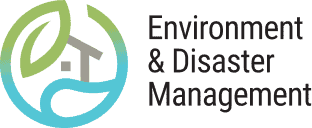From the Netherlands to China to California, people around the world are working with nature to manage flood risk. But as multiple risk factors such as sea level rise, urban development and a changing climate continue to alter landscapes, standards for effective flood management are also changing. Including nature-based methods in flood management portfolios will become the norm, rather than the exception, in building community resilience. These topics and more are discussed in a multi-part flood-themed podcast series hosted by the WWF Environment and Disaster Management program and America Adapts.
Listen to the second episode on the America Adapts website, or play it here:
The WWF publication Natural and Nature-Based Flood Management: A Green Guide (also known as the Flood Green Guide or FGG) was developed by the EDM program at the request of the United States Agency for International Development Office of Foreign Disaster Assistance. Written primarily for application at the local level, the Flood Green Guide takes users through five stages of flood management project development. The FGG web platform, a free and open source, houses additional resources, case studies and stories from around the world, as well as an upcoming FGG Trainers Guide.
Flood management is often considered the domain of engineers, scientists, political leaders and nonprofits. But guests in the second episode of the Flood Green Guide podcast, co-hosted by America Adapts founder Doug Parsons and EDM Senior Director Anita van Breda, examine other ways that people — from scientists to artists to students to youth leaders — can make a difference in unique ways.
Community engagement is a major component of flood management. But scientists and engineers are often unsure how exactly to engage members of the communities they work with. “Sometimes it’s unclear what the ‘community’ is — whether, for example, it’s a neighborhood or an entire city,” says van Breda.
It depends on the geographical span of the project. But engaging with people early on is critical, says Vidya Venkataramanan, a postdoctoral fellow in Northwestern University’s anthropology department. True engagement involves “trying to understand what people’s perspectives are, what their priorities are,” she tells Parsons and van Breda: “co-producing the knowledge, the interventions and the impacts with the people” in the community at hand.
Sometimes that engagement can lead the project in a different direction than managers originally planned for. “Maybe you’ll realize that what you, as a technical person, thought was the main flood risk challenge in this community is not really the main priority for the people who live there,” says Venkataramanan. But flood managers can only find that out if they work with community members from the start.
Venkataramanan recently traveled to Bangkok to assist the EDM program in a Flood Green Guide training. Community engagement was a big topic during that training, and “it really warmed my heart to see that all the groups incorporated the community at the center of their [flood management] plans” by the end of the workshop, she says.
[Listen to the first episode of the Flood Green Guide podcast here.]
“A really critical part of how we get people involved in planning for the future is about the kinds of stories that we’re telling,” Liz Miller tells the hosts.
Miller, a professor at Montreal-based Concordia University, in 2017 launched The Shore Line, a collection of short documentaries about people around the world who have started their own projects to help address climate change, including reducing flood damage in their communities. Her goal was to tell stories about how people are experiencing change and how they’ve been inspired to take action.
Telling individuals’ stories, like the ones in The Shore Line, is valuable for opening discussions on important issues, Miller says. She acknowledges that while storytelling is something any person can do, it does require work to find the right language and master the skill of connecting with one’s audience. It’s especially challenging for something like flood management, which involves scientific and technical components. One person’s story, though, can be the way in to communicating the technical information, she says.
A story is often the first step to beginning conversations and encouraging people to think about how they might take action within their communities, says Miller. “The beautiful thing about films and bringing people into collective spaces is you begin to feel like you’re not alone,” she says.
Catherine Young, who has a graduate degree in the arts and a bachelor’s degree in molecular biology, has brought two seemingly disparate worlds together through her work, which often uses climate and disaster issues as the basis for visual art exhibitions.
“I think art has a lot to do with empathy,” says Young. “I do think it’s something that everyone can engage in.” Last year, for example, she led a series of art workshops for children in Southeast Asia. After learning about the ways they’ve experienced climate change — experiences like flooding and loss of homes — she brought an exhibition of their artworks to the 11th Community-Based Adaptation conference in Uganda.
“If you have a very hard existence, it’s very difficult to see far into the future, of how things can get better,” she says. “So I think with art and design, it gets people to smile a little bit and see how we can look at our situation from a more macro perspective.”
Although artist perspectives like Young’s aren’t often immediately considered in flood management plans, she believes there’s value in bringing the arts into the planning process. Planning requires a variety of solutions, she points out. “If you get a variety of artists who are able to think about these things in very atypical ways, I think you’ll probably be able to find a very eclectic variety of outcomes.”
This episode is also available on Apple Podcasts, Spotify and Stitcher.
